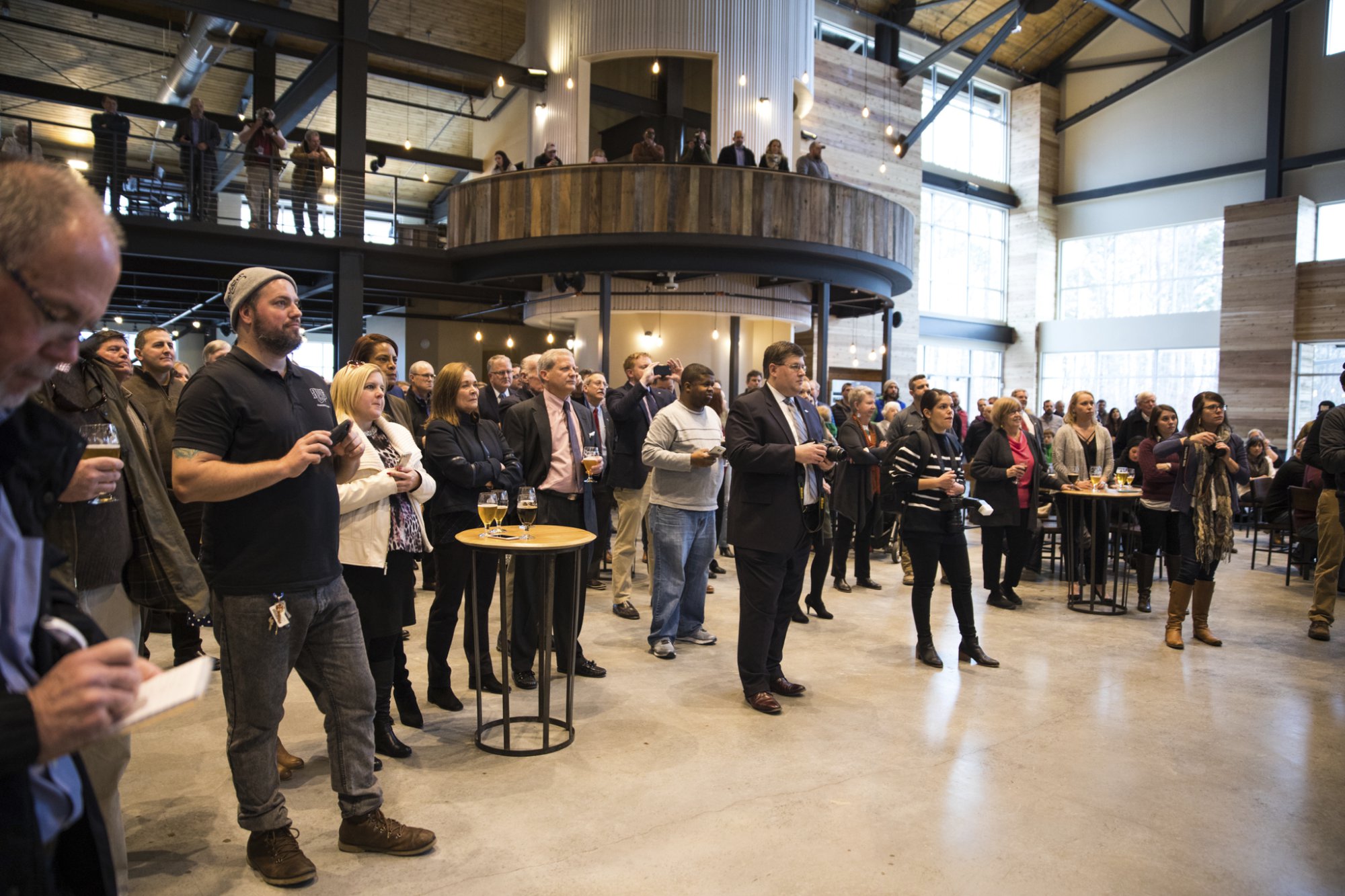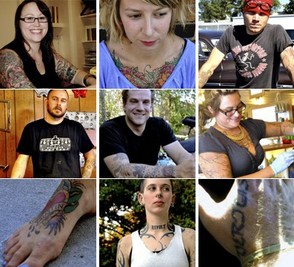The exorcism and transformation of one tiny neighborhood in Richmond.
While Richmond is home to many historic neighborhoods, not all can claim such infamous tales, nor independent revitalization, as the Devil’s Triangle. Concentrated efforts in the past six years have transformed this once rough neighborhood into an economic corridor and designation for locals and visitors alike. Overall, it was a slow, gradual change lasting more than 20 years, but one that the city just recently recognized.
Conversion of the Richmond area known as the Devil’s Triangle has involved many factors, people, and investors. The area’s time-line extends far back, before it was even known by such a moniker.
Trolley’s came through in the 1920s. The streets bustled and hosted a hospital, butcher, pharmacy, barber, newsstand, cigarette shop and even briefly, the city’s second Ukrops.
In the late ‘70s through the early ‘90s, a darker side of history cast a long shadow in which many seedy activities took place. Drugs. Prostitution. Alcoholism. Bar brawls. Gunfights. Robberies.
THE DEVIL’S TRIANGLE
The Devil’s Triangle spans less than a mile, and is bundled into an urban area that Richmond locals refer to as the Upper Fan, which developed much later than the rest of the Fan, a general term for the part of the city that boasts VCU and historic homes.
The boundaries of the Devil’s Triangle run from Monument Ave. on the north to Kensington Ave. on the south, from the Boulevard on the east to Belmont Ave. to the west.
An aura of ill repute once enshrouded this tiny neighborhood area with a big reputation. There was a lot of crime, and a rougher clientele made the bars too foreboding for most Fan residents.
“If there was any corner of Richmond that was notorious, it was this corner,†said Rich Holden, former owner of the bar Felix, and current partner in Bandazian & Holden, the investors who have contributed substantially towards the area’s transformation.
For three decades The Devil’s Triangle has been Holden’s beat. He has been involved with these streets since the early ‘80s; as a proprietor, resident, and now, major real estate investor. Holden owned and operated Felix seven days a week, one of the three bars which formed the original Devil’s Triangle; Felix, The Ritz, and Cafe 21.
“It was very Southern blue collar, lower income, lots of people on welfare,†said Holden, as he explained the common denominators among residents.
There were also Vietnam vets with psychological problems, biker gangs, and criminals. When the police were out looking for someone, their first stop was The Ritz, and odds were good the suspect would be apprehended.
“One reason the police sort of tolerated The Ritz, and didn’t put more pressure on them was because their suspects would gravitate towards the bar and it made them easy to find,†said Holden.
“It was a place where you would see a lot of drunken fights and could find drugs, even prostitution,†said Sean McClain, the owner of Banditos Burrito Lounge, now in its 13th year of operations.
HOLDEN EXPLAINS THE ORIGINS OF THE NICKAME.
Holden purchased Babe’s restaurant in anticipation of Fan renovations moving over the Boulevard, a former boundary that divided the more desirable city area from the less. The renovations didn’t really begin to happen until the later ‘90s, almost 20 years after Holden had opened Felix.
The local oasis for sundries and octane, a 7-11, opened in the late ‘80s. It brought floodlights and 24 hour activity to a dark corner once inhabited by an auto-body shop that doubled as a drug trafficking hotspot.
“It was one of the worst things we could have had. At night there was no lighting and it provided opportunity for all sorts of questionable characters and activities, especially drugs and drug dealing,†said Holden, who watched cars steadily come and go in the evening.
At that time, drug customers were the only destination traffic that the area received, no outsiders or families visited the bars. Clientele for the bars came only from within the small neighborhood. By the time Holden closed his doors, there were 250 people banned from the bar. His wasn’t the roughest location either, of these Wild West saloon-like bars, where people were sometimes asked to check weapons when entering.
The tales are numerous, as Holden attests, and for years, he had a front row seat.
Bodies would fly out the Ritz. Someone checked a hand grenade. Gunfights. A dent in the door frame at Cafe Diem, formerly Cafe 21, is claimed to have come from a ricocheting bullet.
Mark Holmberg, former reporter for the Richmond Times-Dispatch, once arrived on the scene of a gunshot call to find the victim still chugging beer at the bar, as blood oozed from his wounds.
___________________________________________________________________
Listen to reporter Mark Holmberg’s account of a gunfight in the Devil’s Triangle.
____________________________________________________________________
Richard Arthur, owner of Cafe Diem, was actually born in this neighborhood, at the former Johnston Willis hospital. He purchased Cafe 21 nine years ago, when the original owner died.
Arthur explained that the bar’s design was with intention to minimize causalities. He recalled the tire irons that hung from each end of the bar when he took over it. The bar’s brick construction was built four deep, with intention to halt a 357 magnum bullet in its path.
His first year in business, Arthur held a fundraiser to replace the old bar stools.
“The bar stools were clunky and heavy, designed so that a rowdy patron would topple over if they tried to wield one above their head,†said Arthur.
Those days are gone.
AN EXORCISM
Street lights, brightly colored paint, and hefty financial investment are a few ways to cast out the devil.
Eventually, the Fan spilled over the Boulevard. The integration and extension of the Fan, and a keen focus on redevelopment finally prompted the long awaited, and necessary, exorcism.
Old rooming houses were converted. Buildings were gutted and restored. The demographics began to change. The median income jumped from $25,000 to $75,000 and crime dropped. No one knows where all the former residents went, but the Fan migration took away the rowdy clientele.
“I sometimes am amazed. It’s a totally different place. I look up and down these streets and can’t believe the change since the ‘80s,†said Holden, who rarely, if ever, sees anyone who used to frequent the area.
“It’s a historic neighborhood that offers all modern conveniences,” said Ray Bonis, a Devil’s Triangle resident for 10 years.
Bonis, who lives in the apartments located in the converted Johnston Willis hospital, never anticipated staying this long. An avid historian employed by the VCU collections department, Bonis not only benefits from the neighborhood’s accommodations, he also blogs about the area.
_____________________________________________________________________
Ray Bonis, a local resident for ten years, describes the appeal of the Devil’s Triangle.
____________________________________________________________________________
IT TAKE A VILLAGE, AND MONEY.
Holden mentioned that a lot of hands were involved in the revitalization of the neighborhood, and doesn’t think that Bandazian & Holden can take complete credit. Bandito’s relocated here in 2003, and had prior success changing the gateway to Oregon Hill, their former location.
Bandazian & Holden purchased all the commercial properties along the notorious two blocks, and also have numerous residential holdings in the area. Inspired by a district in Charleston, S.C., renovations included adding more street lights for safety, coating the buildings in fresh paint of vibrant colors, and removing several awnings to make the storefronts more inviting.
Three bars still inhabit the original corners, but now they attract families and are considered destination spots from other neighborhoods.
__________________________________________________________________________
Take a look into the Devil’s Triangle
__________________________________________________________________________
The city has acknowledged the efforts made by the real estate company. Recently they met with Mayor Dwight C. Jones and his Deputy Chief Peter Chapman, to discuss future plans that include getting the power and phone lines underground and making other aesthetic upgrades.
Holden claimed that the city is considering giving them a special designation, similar to Carytown.
“The city really likes what we’ve done here, because it took a problem away from them. The police attention took man hours. Now it is an area that they can point to with pride,†said Holden.
While the city funds might be coming in soon, everything that happened previously was private investment. Business owners saw an opportunity to cast out the devil, to change the neighborhood’s reputation and existence.
Holden doesn’t seem to keen on the lasting nickname. Having worn many hats, from a bar owner deep in the trenches to an investor calling the shots, might make Holden leery to associate the infamous reputation with the burgeoning business district. And after all, those who refer to it as The Devil’s Triangle were not likely to have ever visited in its heyday.
Arthur likes the moniker, as does McClain.
“Now it seems to be one of those places that lives in the lore of the old days,†said Sean McClain, who noted the nickname is just a catchy way to describe a business district, much like Hell’s Kitchen, N.Y.
McClain shook his head thoughtfully and offered an observation that perhaps the devil really has nothing to do with this thriving business district.
“I don’t think the devil lives here. I have to say, I don’t think he lives in this triangle,†emphasized McClain.
Anymore.












